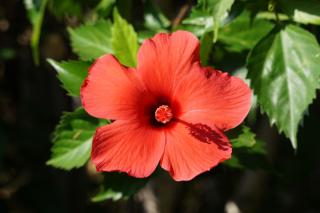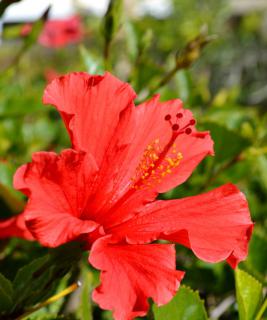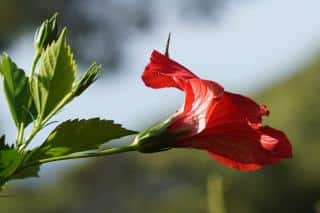

The lively flower colors of the Hibiscus bring to mind the enchantment of tropical flowers.
Hibiscus also exist as shrubs that have adapted to colder, temperate latitudes. They often gild our summer days with multicolored dream-like flowers.
Native to India and China, the Hibiscus syriacus plant was introduced to the West in 1596 and is known by many different denominations: althea, rose mallow, Rose of Sharon, Syrian ketmia, etc.
It is a shrub that is easygoing and adapts well to diverse environments.
 Place it in full sun, in fertile and well drained soil.
Place it in full sun, in fertile and well drained soil.
Pruned in free shapes, your hibiscus can become beautiful shrubs that are very dense with upright stems. They may reach up to 6 to 10 feet (2 to 3 meters) high and 5 feet (1.5 meters) across.
Together with other shrubs or perennials, hibiscus will bring a touch of joy to your flower beds (planting distance: about 5 feet (1.5 meters) apart). It is also possible to plant hibiscus in perennial flower beds, to give the scenery a little depth. One or more hibiscus planted as part of mixed hedges produce a marvelous impression.

Prune year after year to form a short trunk while maintaining the volume of the crest. This will lead you to having a cute flower-bearing miniature tree.
Thanks to its density and its resilience after severe pruning, hibiscus is very well adapted to being grown on balconies. Indulge the unique elegance of a stem hibiscus. It’s sometimes also called “Lollipop hibiscus” because it’s shaped like a lollipop! These are sometimes braided, which results in thicker, stronger trunks.
You may purchase it already shaped. Repot it to a container that is 12 to 16 inches (30 to 40 cm) deep. A square garden box is perfect. Your flower-bearing miniature tree will surely be noticed!
Marie Etavard